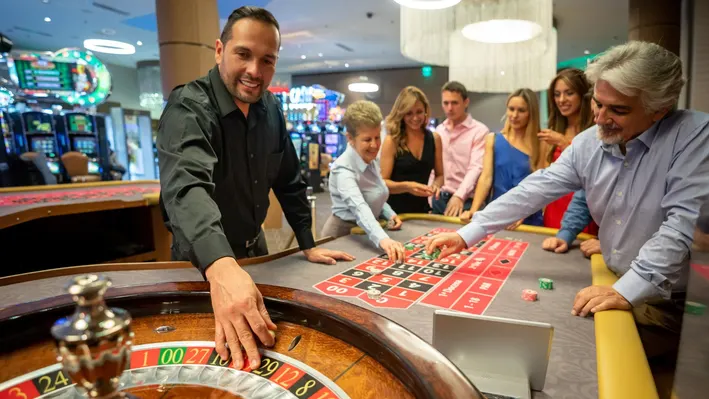In the dynamic world of online casinos like Spinanga 2, players are often drawn into immersive gaming experiences that can make hours feel like minutes. But beyond the fun, there’s a deeper phenomenon occurring: many players report not remembering how they lost money. This isn’t just a case of bad memory – it’s a psychological pattern known as “playing on autopilot.” But why does this happen? What are the mechanics behind this dissociative state, and how do casino platforms capitalize on it?
This article dives deep into the cognitive, emotional, and behavioral science behind autopilot gambling, exploring how players lose track of both time and money in ways that feel almost surreal.
What Does It Mean to Play on Autopilot?
The Flow State and Dissociation
Playing on autopilot is often linked to the psychological concept of the “flow state”—a deep, immersive focus where the sense of time, space, and self-awareness diminishes. In more extreme forms, this behavior borders on dissociation, where players feel detached from their actions.
Repetitive Behavior Patterns
Gambling platforms encourage repeated behaviors—spinning, clicking, betting—that become so habitual they bypass conscious awareness. Like driving a familiar route without remembering the journey, players operate in a mental haze.
Neurological Roots of Autopilot Gambling
Dopamine Loop
The reward system in the brain, primarily governed by dopamine, is heavily activated during gambling. Each small win reinforces behavior, while losses don’t necessarily deter the player due to delayed negative reinforcement.
Cognitive Fatigue and Executive Function Decline
Extended play weakens the brain’s executive functions—critical for decision-making and impulse control—leading players to act impulsively and repetitively.
Neural Patterning and Habit Formation
Habitual actions like spinning reels form neural shortcuts in the brain. The more these patterns are reinforced, the less conscious thought is required to perform them.
Interface Design and Behavioral Conditioning
Infinite Scroll and Non-Stop Play
Platforms are designed to reduce friction between actions. No loading screens, no pauses, and constant stimuli encourage uninterrupted gameplay.
Sound Cues and Visual Stimuli
Positive reinforcement through celebratory sounds, animations, and bright visuals can make players feel successful, even when they are losing.
Microrewards and Intermittent Reinforcement
Small, random rewards keep players engaged. This unpredictability is key to the psychological conditioning used in slot machines and similar games.
The Role of Attention Narrowing
Tunnel Vision Effect
As players focus solely on the screen and their next bet, external awareness fades. This narrowing of attention contributes to a loss of awareness about time and spending.
Environmental Detachment
Many players report not hearing background noises, missing texts, or losing track of real-world responsibilities during intense gambling sessions.
Emotional Buffering and Psychological Escape
Using Gambling to Avoid Stress
Players often gamble to escape real-world issues like stress, loneliness, or anxiety. The act of gambling becomes a mental shield against intrusive thoughts.
Emotional Numbing
Repeated exposure to losses without immediate consequences can numb emotional reactions, making the behavior feel emotionally neutral—even when finances are deteriorating.
The Mechanics of Memory Gaps
Working Memory Overload
Gambling floods working memory with sensory and emotional data, leaving little room for retention of factual information—like how much was spent.
Fragmented Recollection
Without distinctive events to anchor memory (such as wins or breaks), sessions blur together. Players often recall highlights but forget cumulative losses.
Autopilot Gambling in the Digital Age
The Smartphone Syndrome
Mobile gambling intensifies autopilot behavior. People play in bed, while commuting, or during passive moments, further reducing situational awareness.
Multi-Tab Play and Background Usage
Modern players often gamble with multiple games or in the background of other tasks. This divided attention fosters shallow engagement and weaker memory encoding.
Why Don’t Losses Trigger Awareness?
The Sunk Cost Fallacy
When players lose, they often keep going to “recover” losses. This fallacy tricks the brain into thinking that stopping now would make all prior spending worthless.
Loss Desensitization
Frequent losses become normalized. With digital tokens replacing cash, the psychological impact of losing becomes abstract and less emotionally salient.
Case Studies and Real-Life Accounts
“I Didn’t Even Know I Spent That Much”
Many gamblers only realize the extent of their losses when reviewing bank statements. This disconnect highlights the memory blackout caused by autopilot behavior.
“It Was Like I Wasn’t Even There”
Some players describe feeling like an observer, not a participant. This dissociative state is not uncommon among those with compulsive gambling habits.
Strategies to Prevent Autopilot Play
Set Session Timers
Using alarms or built-in casino features to limit play time helps break the spell of endless gameplay.
Keep a Play Journal
Writing down game sessions, stakes, wins, and losses in real time forces cognitive engagement and builds awareness.
Use External Accountability
Share your gambling habits with a friend or use monitoring apps to track and limit activity.
Activate Reality Checks
Many platforms offer optional features like pop-up reminders about time spent and money used. Enabling these can bring attention back to the present.
The Ethical Responsibility of Platforms
User-Centered Design for Awareness
Casinos can incorporate design elements that promote mindfulness: visible timers, balance trackers, and friction before large bets.
Data Transparency and Feedback Loops
Giving players access to detailed gambling histories in visual formats (graphs, summaries) can help combat the forgetting curve.
Promoting Breaks and Mindful Play
Scheduled pauses and suggested breaks encourage players to step away, reducing the likelihood of falling into a dissociative loop.
The Future of Conscious Gambling
AI-Powered Behavioral Alerts
Machine learning models can detect autopilot behavior (e.g., rapid betting, repetitive losses) and trigger intervention messages.
Virtual Reality and Enhanced Immersion
As gambling moves into VR, new risks of dissociation emerge—but so do new opportunities for built-in self-awareness tools.
Education and Gamified Self-Regulation
Platforms could offer rewards for responsible behavior, like logging out after wins, setting limits, or completing awareness training.
Conclusion: Awareness Is the Antidote
The phenomenon of gambling on autopilot is deeply rooted in human cognition and emotion, but it is not inevitable. With better understanding, player education, and platform accountability, it’s possible to design gambling experiences that are engaging but not entrapping.
Platforms are at the forefront of this digital revolution—and with great power comes the potential for great responsibility. For players, the key is to remain present, engaged, and mindful. Because once you’re aware, you’re in control—and that changes everything.




